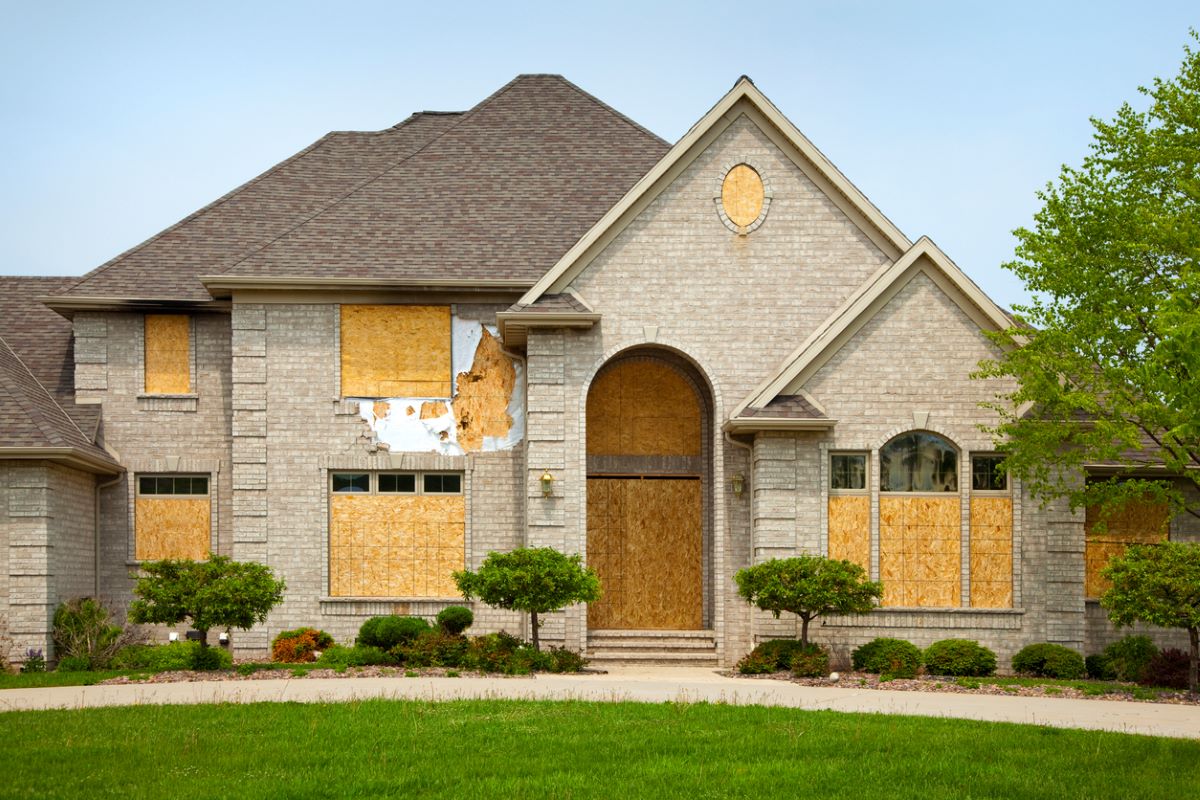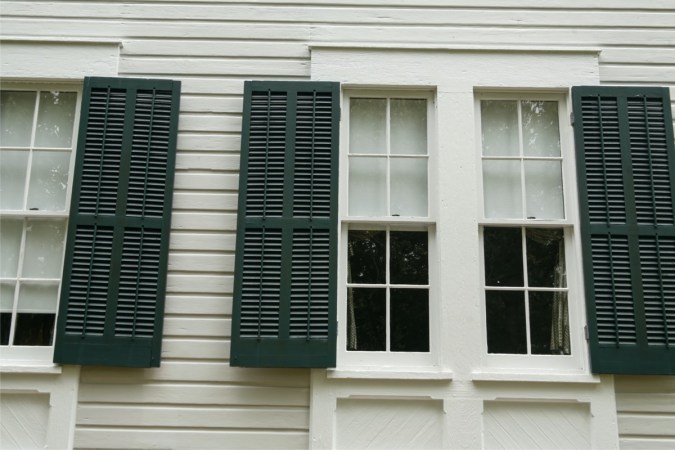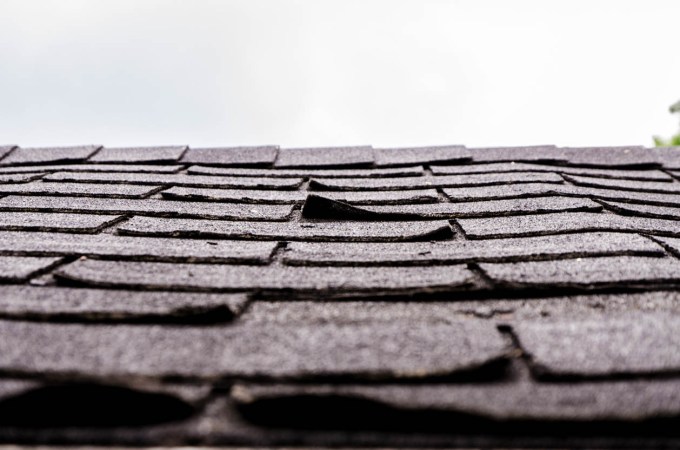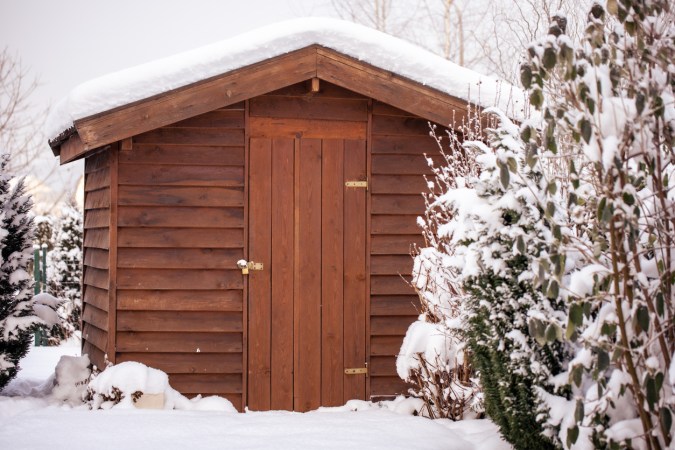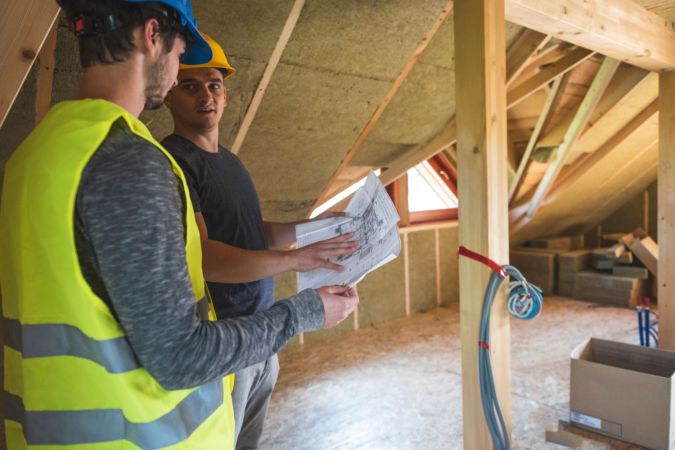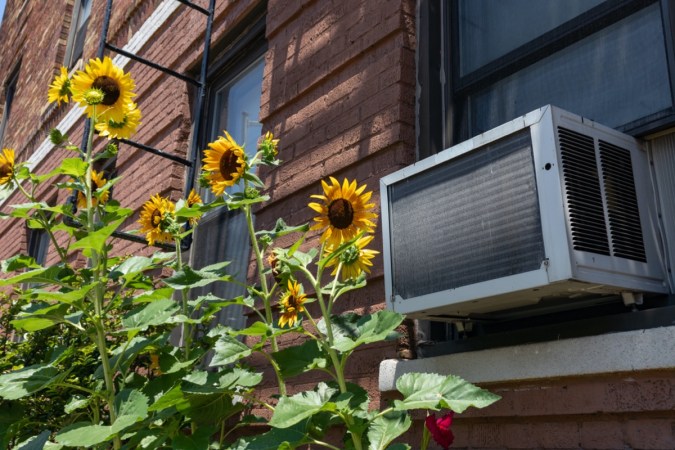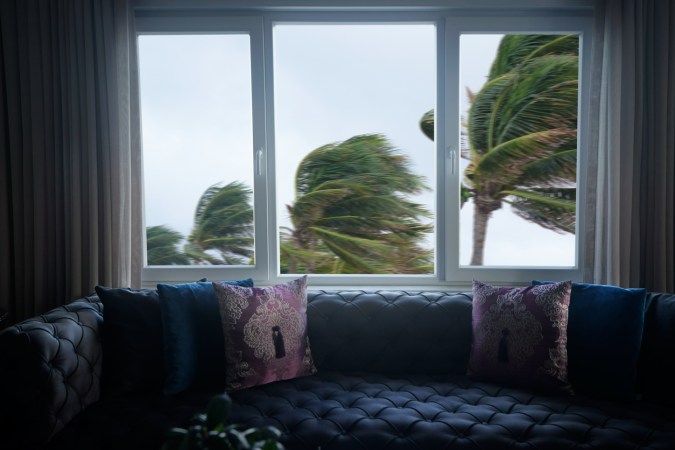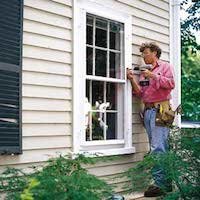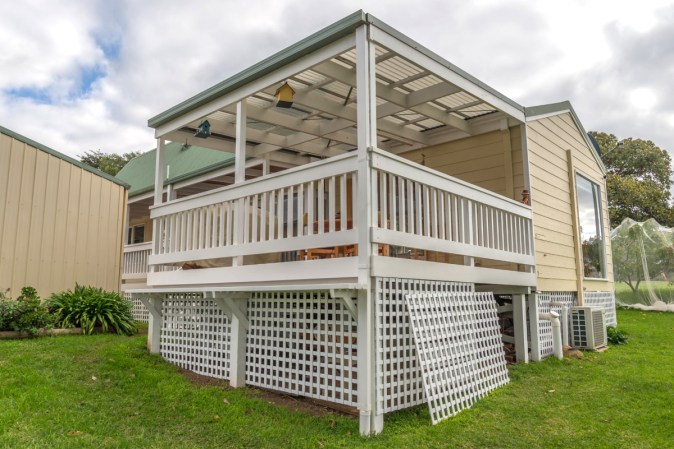We may earn revenue from the products available on this page and participate in affiliate programs. Learn More ›
Those who live in coastal regions in the Southern U.S. know all too well about the damage and destruction a hurricane can do. While there may be no foolproof way to make sure a home survives a hurricane completely untouched, there are measures you can take to prevent hurricane damage. For windows, in particular, one of the best ways to protect them is to cover them with durable sheeting or panels.
Homemade window storm covers can be made from plywood using common tools many DIYers will already have in a shed or a garage, and the materials can be purchased at an affordable price of between $25 and $50 per window, depending on the size needed. Ahead, learn how to board up a window to shield your home from potential damage before the next big one hits.
RELATED: This is When Hurricane Season Starts and Ends
The Best Plywood for Hurricane Window Protection
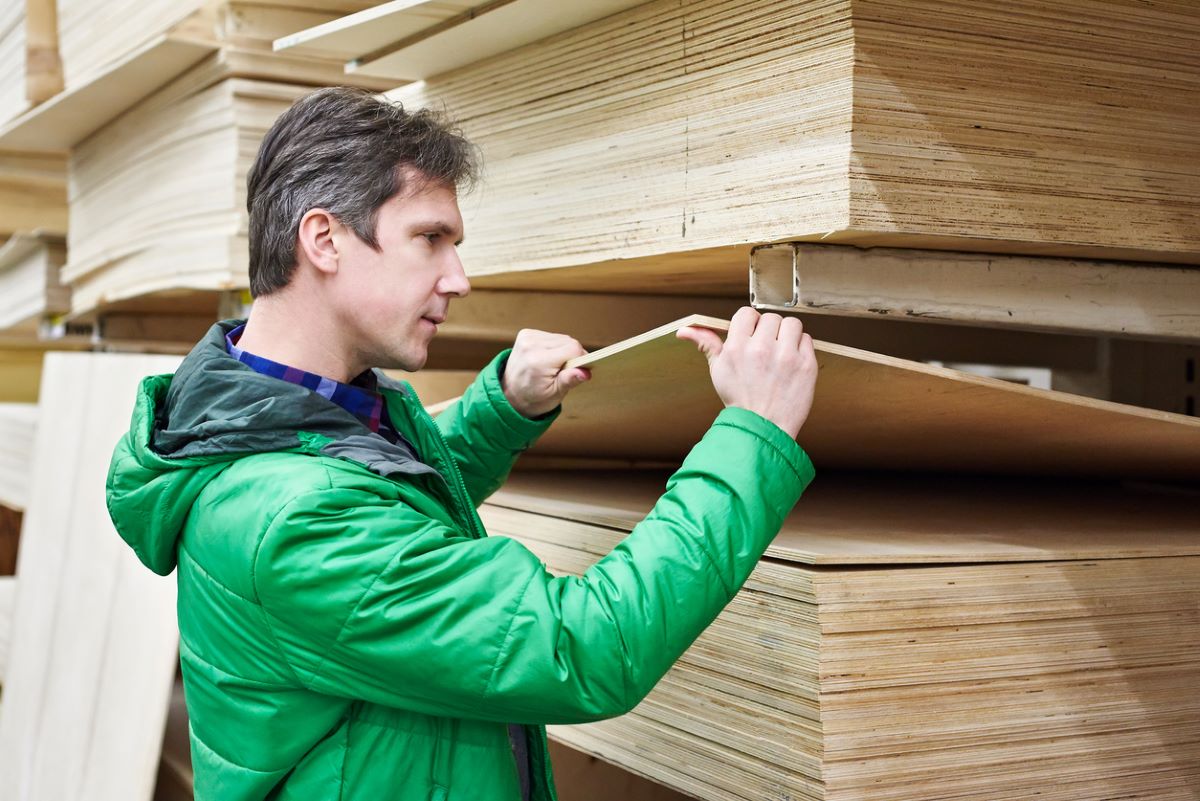
Thickness is key when choosing plywood for hurricane protection. Any boarded-up windows that use thinner than 5/8-inch, 21/32-inch, or 3/4-inch plywood won’t be able to withstand objects thrown by hurricane winds. While most grades of plywood will help, CDX or RTD plywood rated for exposure are the best options for making DIY storm covers for windows.
How to Board Up Windows
The steps below will explain how to secure a window using sheets of plywood and basic tools, including how to measure, cut, and install these panels. The instructions also contain tips for reusing these boards, so you can board up your windows any time a hurricane is approaching. This method only covers boarding windows up from the outside; while windows can be boarded up from inside, it’s not as effective.
Tools & Materials
Bobvila.com may earn a commission from purchases made through these links.
BEFORE YOU BEGIN
Be sure to wear safety glasses, gloves, and other necessary protective equipment when operating power saws and drills. While the steps for installing hurricane panels over windows are similar regardless of what type of windows you have, installation can vary depending on your home’s siding. Plus, it’s helpful to ask one or two helpers for assistance when installing the panels, too.
- If your home has brick siding, you’ll need to use a masonry bit and screws to attach the boards to the home.
- If your home has vinyl siding, you’ll need to use different spacing when drilling holes for the fasteners to ensure the panels are attached to the home’s framing and not the weaker sheathing.
RELATED: 11 Things You Should Never Do During a Hurricane
STEP 1: Measure the windows.
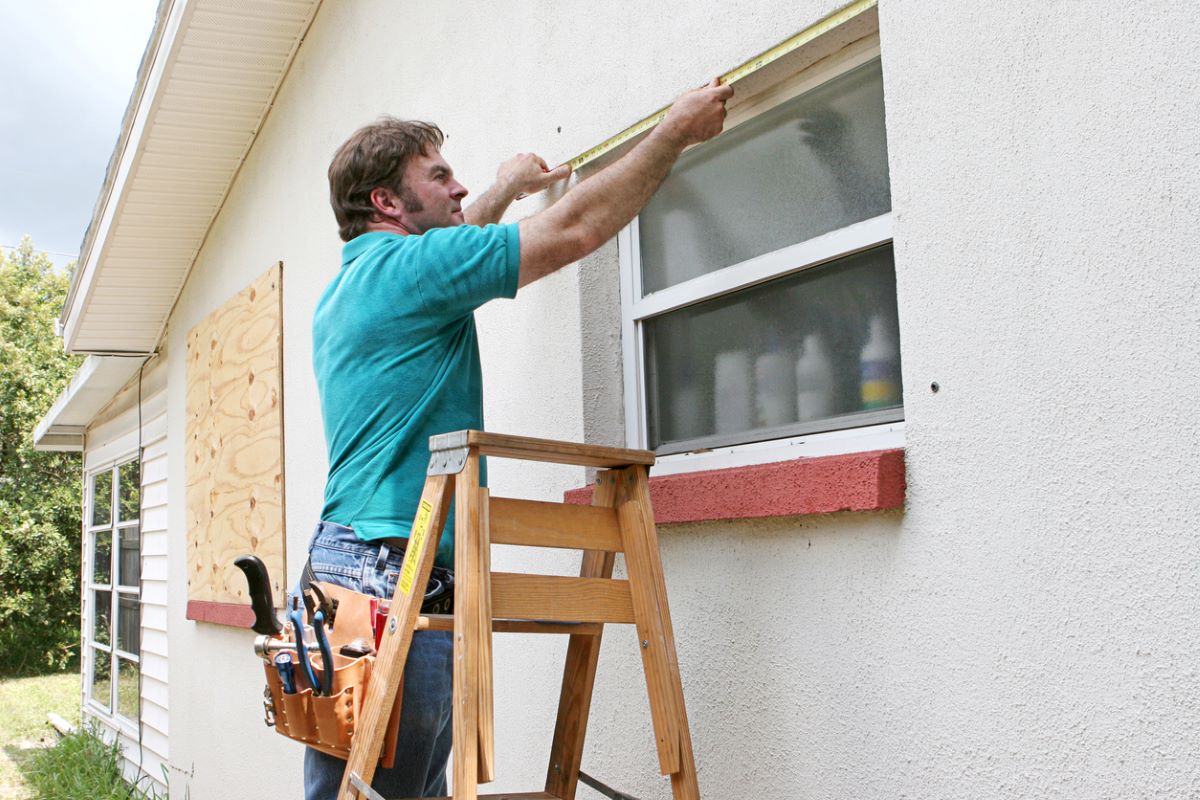
Use a tape measure to measure the width and height of the window opening on a wood frame home. Add 8 inches to each measurement to allow the plywood boards to overlap the window by 4 inches on each side. The panels should be no thinner than 5/8-inch, 21/32-inch, or 3/4-inch in thickness.
STEP 2: Cut the panels.
Using the dimensions you took from step one, use a circular saw or track saw to cut the plywood panels to size, making sure to account for the overlap. For windows that are larger than a sheet of plywood, use a 2×4 board to connect two panels together.
Secure the 2×4 to both pieces of plywood at the seam with 2½-inch screws spaced every 4 to 6 inches. To make sure each panel is matched to the right window, label each window board with a permanent marker as you cut each one and draw an arrow indicating which end goes up.
STEP 3: Prep the panels for installation.
After cutting the panels, use a pencil, tape measure, and 4-foot level to draw a straight line 2 inches from each edge of the panel. If your home has vinyl siding, draw the line 3¼ inches in from the edges to ensure the fastener hits the framing surrounding the window when you install the panels.
Mark drill locations along the line at 12-inch intervals and at each corner. Drill holes at each location using a bit that’s slightly smaller than the screw or bolt you plan to use to attach it.
STEP 4: Prep the window for installation.
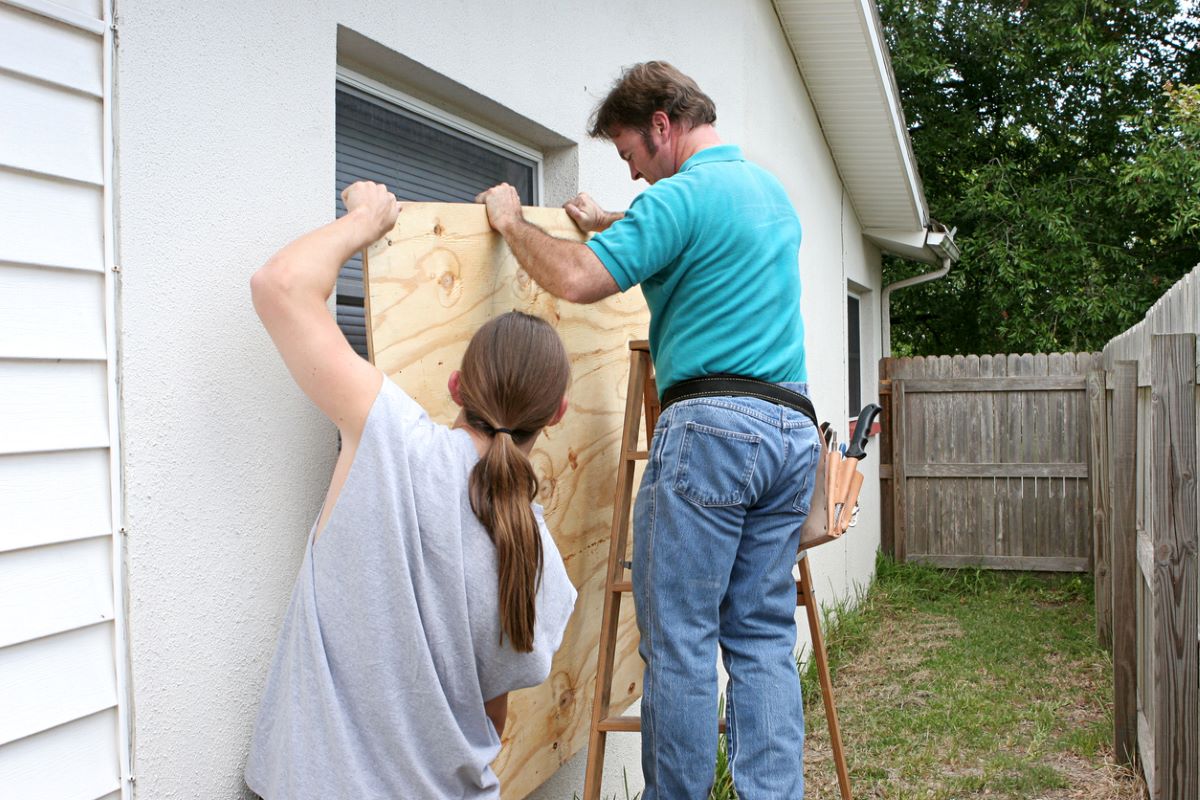
Begin by asking a helper to place the panel into position over the window, making sure it’s properly aligned. Then, use a pencil to mark hole locations through the predrilled holes in the plywood. Mark the corners of the panel on to the house surface using a pencil, then remove the panel.
Next, use the drill to make pilot holes that are about 2 inches deep at each drill reference point using a drill bit that’s slightly smaller than the fastener. If you’re drilling into brick, you’ll need to use a masonry drill bit. For vinyl, make sure you’re drilling into the studs that frame the window casing.
STEP 5: Install the panels.
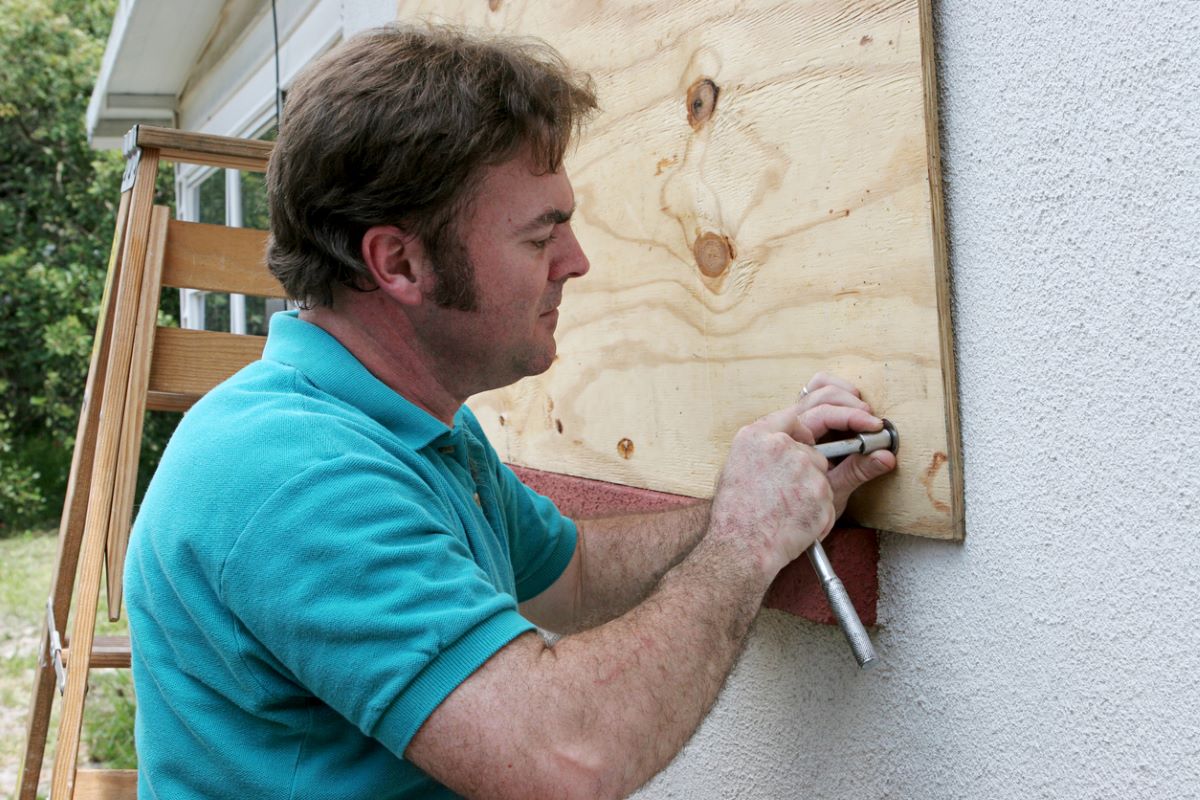
Use 3-inch-long 3/8-inch lag screws to secure large panels. For smaller panels, 2½-inch long 1/4-inch lag screws will suffice. If you’re installing the boards over a home with brick siding, use masonry screws.
Place the panels back into position over the window, using the corner marks made in the previous step to line it up. Use a power drill and the fasteners to secure each piece of plywood to the window.
Tips for Making Reusable Hurricane Window Protection
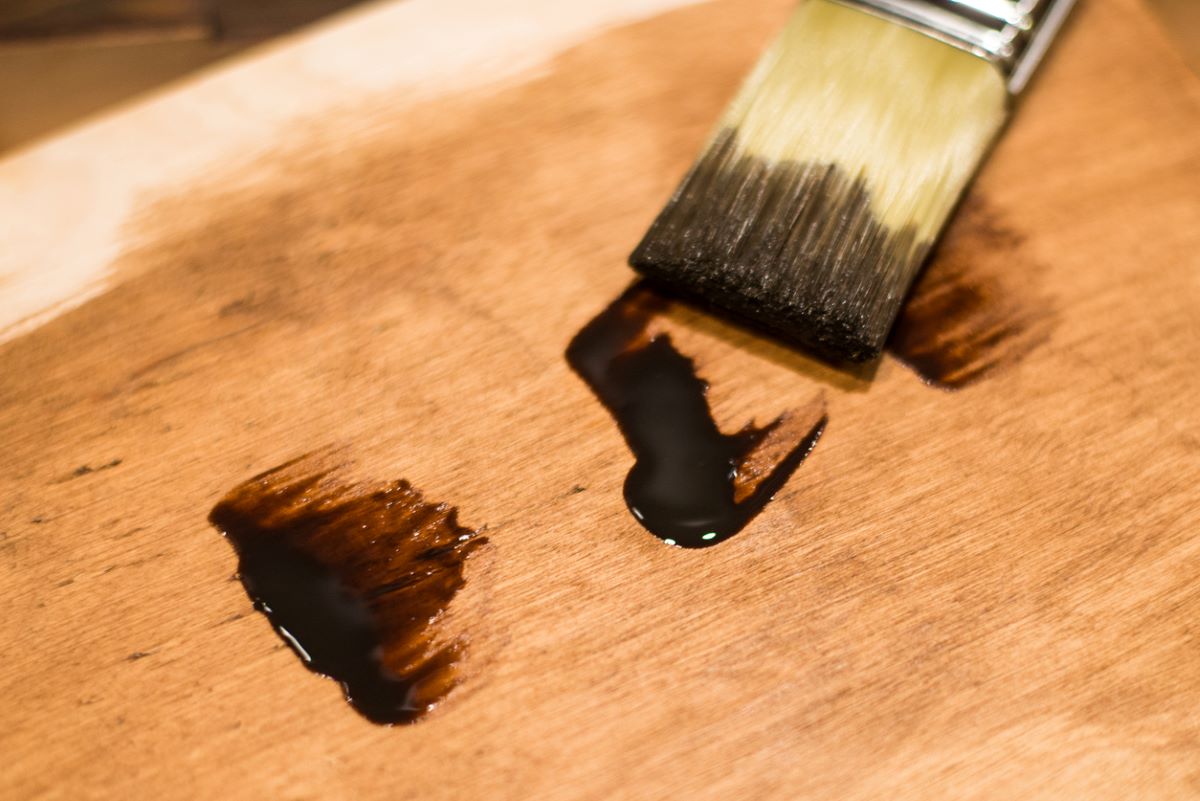
If you live in a hurricane-prone region, then it may make sense to create reusable window boards to avoid having to purchase and make new ones every time a hurricane threatens. By using the same panels each time, you are also limiting the wear and tear on your window frame from repeatedly installing and removing fasteners in different locations.
Your window panels will last longer if you coat them with an exterior paint or wood sealer. You can also install clips on the panels that make it easy to pop the boards in and out, eliminating the need to fasten the panels directly to the window frame each time you want to install them. Hurricane window clips are an especially good idea for homes with vinyl siding, as they eliminate the need to fill holes left by fasteners.
RELATED: The Best Hurricane Shutters for Protecting Your Home
Final Thoughts
Boarding up windows is an effective way to prepare a home for the high winds of a hurricane, and it’s an inexpensive alternative to installing hurricane shutters. By using the methods described above, you can learn how to board up a window properly. When completing this project, remember to use the right fasteners and method to suit the type of siding on the home. Also, whenever using power tools such as a drill or circular saw, make sure to wear safety goggles.

